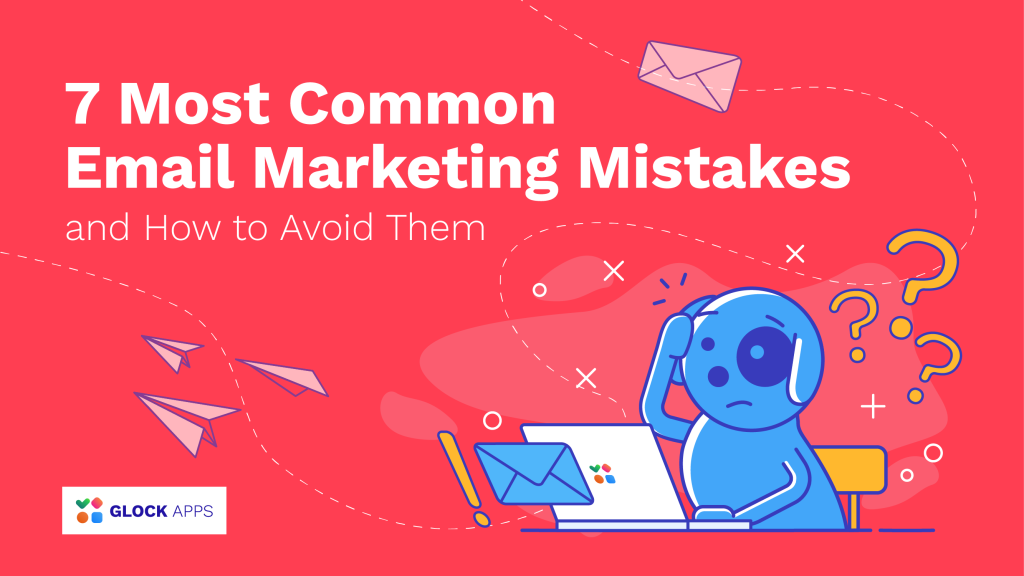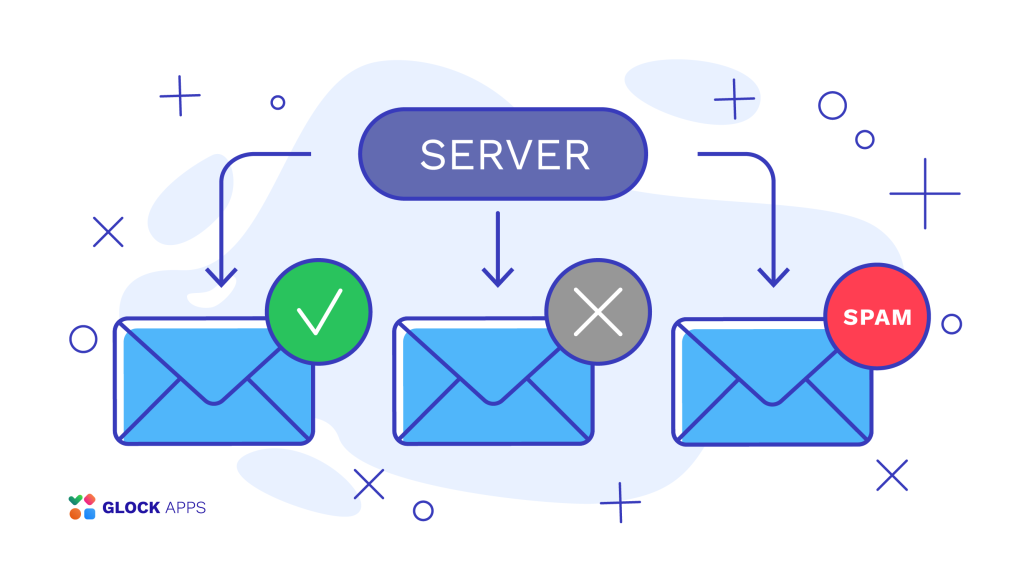7 Most Common Email Marketing Mistakes and How to Avoid Them

Do you know that the same email message can be rendered in different ways, depending on the recipient’s email client, system, and environment? In other words, there are different ways that a message could fail.
Email marketing experts know that creating exceptional emails is harder than it has ever been. The recipients’ expectations have reached previously unheard levels – 86% of recipients will unsubscribe from a brand’s communications after just a couple of poor experiences.
With numerous email communications people receive in their inboxes every day, the necessity of keeping the readers’ engaged dictates that marketers keep up their email practices with the time.
The use of artificial intelligence for email marketing helps automate a lot of tasks. AI allows to create appealing Subject lines, write content that resonates well with the recipients, send automated sequences and event-triggered messages to serve the subscribers’ needs better.
In the world of email marketing automation, senders may overlook some aspects related to email content and the sending process, which, however, could impact the email campaign performance.
Let’s examine the most common email marketing mistakes that should be avoided to maximize the ROI of your email communications:
1. Overlooking Content Issues.
Content issues include everything from formatting errors, incorrectly displaying images or broken links to simple mistakes like typos.
Sending out an email with content issues practically ruins your entire email campaign. You won’t make any money if your subscribers don’t act on your email in a significant way. Moreover, it reduces email interaction and progressively damages the reputation of your brand, undermining confidence in your upcoming communications.
2. Making Emails Unaccessible.
This is an unacceptable scenario for both email senders and recipients. Making a spelling error in content and losing out on a potential return on investment is one thing; accidentally excluding a sizable percentage of your audience is quite another.
This exclusion occurs when you fail to utilize sufficiently large font sizes or provide ALT text to your images – both of which may be quickly and simply fixed! When creating email designs, it’s important to take screen readers, mobile devices, and dark mode into account.
Emails that are not accessible not only limit their audience but also negatively impact the reputation of your brand, leaving recipients with a sense of exclusion.
3. Failing to Personalize Email Campaigns.
Delivering irrelevant emails is one of the most common email marketing mistakes, and it’s far more subtle to fix than a simple typo or rendering error.
What’s usually wrong with such mass emails? Lack of personalization.
Personalization is now crucial in the current email marketing environment. Even though it might not be as obvious as a typo, failing to personalize emails is a common mistake linked to poorly performing emails.
It’s important to understand that personalization is much wider than saying “Hi, John!” In the modern email marketing environment, email personalization includes a personal approach to data management such as email list segmentation based on subscriber’s data in order to create a personalized email sequence for each segment. Event-triggered emails sent after a recipient takes an action or on behalf of an event (recipient’s birthday, brand’s anniversary, holidays, etc.) are also part of email campaign personalization.
According to a survey conducted by Statista, 55% percent of email marketing professionals understand the importance of email personalization and their goal for 2024 is to expand how they use personalization for their email communications. As such, personalization is no longer a nice-to-have but rather a must-have that gives your email campaign an advantage and a higher chance to reach its maximum potential.
4. Using Default Preview Text.
We frequently see emails in our Inboxes that either have no preview text at all or only include the first line of copy; these messages typically read something like “Can’t read this email?” or “View it in your browser.”
Opposite to preheader text, which is displayed at the top of the email body, preview text appears in the inbox next to the Subject line. A recipient is able to read preview text even without opening the whole email. This provides a good opportunity for email marketers to make a strong first impression, draw in subscribers and persuade them to open your emails. Without an open, obviously, no click will happen.
5. Sending from a “No-reply” Email Address.
A “no-reply” email address is normally used for automated emails such as autoresponders, alerts, reminders or notifications. Its function is to deliver information without receiving a reply from the recipient. These email addresses typically use “no-reply” or “noreply” followed by a domain name.
Despite being useful for autoresponders and notifications, the utilization of a “no-reply” email address for marketing emails and newsletters can result in a less engaging and user-friendly experience. Sending messages from a “no-reply” address makes it impossible for recipients to respond, thus closing the opportunity for a sender to build a conversation and relationship. Thus, it is important to use a monitored email address for your email communications allowing a recipient to respond if they need more information or have any questions or concerns about your offerings.
6. Failing to Authenticate Emails.
Email authentication is a set of techniques and protocols used to verify the legitimacy of an email message, ensuring that it comes from the purported sender and hasn’t been altered during transmission. These authentication mechanisms play a crucial role in preventing email fraud, phishing, and unauthorized use of email accounts. The primary email authentication methods include:
- Sender Policy Framework (SPF): SPF helps prevent email spoofing by allowing domain owners to specify which mail servers are authorized to send emails on behalf of their domain. Email receivers can then check the SPF record of an incoming message to verify its authenticity.
- DomainKeys Identified Mail (DKIM): DKIM adds a digital signature to an email’s header, which is verified by the recipient’s mail server. This signature is generated using a private key held by the sending domain, and a public key is published in the domain’s DNS records. DKIM ensures the integrity of the message and confirms that it was signed by an authorized sender.
- Domain-based Message Authentication, Reporting, and Conformance (DMARC): DMARC is a policy framework that ties SPF and DKIM. It allows domain owners to instruct email receivers on how to handle messages that fail authentication checks. DMARC can be set to monitor, quarantine, or reject suspicious emails, providing a higher level of control over email traffic.
The implementation of SPF and DKIM has already been a requirement; starting from 2024 email authentication using DMARC becomes mandatory in order to deliver emails to Google, Yahoo, AOL, and Outlook. Therefore, email senders failing to set up any of the authentication protocols risk seeing their messages ending up in Spam or being blocked.A GlockApps DMARC Analyzer will help you create a DMARC record for your domain and gather information about your email authentication outcomes and email sources. It will spot any breaches in your domain security and send automatic notifications to you when something goes wrong.
7. Ignoring Deliverability Issues.

Learn more: How to Create an Email Marketing Strategy: Step-by-Step Guide
Because deliverability might be a complicated technical topic, problems with email deliverability are commonly underestimated. On the other hand, your email marketing efforts will be lost if your emails do not arrive in the Inbox. Email marketers who don’t care about where their messages land leave a significant amount of revenue on the table.
Email deliverability issues can be divided into two categories:
1. Not delivered emails. This scenario includes the cases when the messages are not sent due to a misconfiguration of the SMTP server, and when the messages are sent but not delivered to the intended recipient. In the latter case, email messages are either returned to the sender with a bounce error or blocked without a bounce.
There are different causes of why an email may be blocked: spam content, bad reputation of a sending IP, bad reputation of a sending domain, suspicious URLs in the content, or failed email authentication.
2. Emails filtered to Spam. In this scenario, the messages reach the recipient’s inbox but get filtered out as spam by the filters. The causes of why an email goes to Spam differ from content issues to sender reputation score.
The common factors that ISPs look at when making email placement decisions are: sending domain reputation, email content, and user interaction. Each ISP decides itself how much value it puts in each factor and what other signals it evaluates. Therefore, solving Spam folder placements is often a far more complicated process than fixing content issues.
It is to note that time is an important factor when it comes to determine and fix email deliverability issues. The sooner you discover and solve the problem, the least harm will be done to your email campaigns. So, the question is not if an issue will happen, but rather when it is noticed and solved.
In GlockApps, you can quickly run an Inbox Insight test to see where your email lands. The tool will check email authentication, spam score, email placement, and provide a list of actionable steps to improve the Inbox rate. You’ll never send a message with a broken image or link if you test it with GlockApps.
You can automate testing of your most important emails by setting up automatic tests; you can receive alerts if the Inbox rate goes below the desired value.
In addition to deliverability testing, GlockApps provides a whole toolkit to enable brands to maximize the effectiveness of their email marketing campaigns and improve their domain security.



